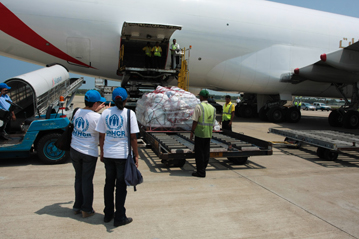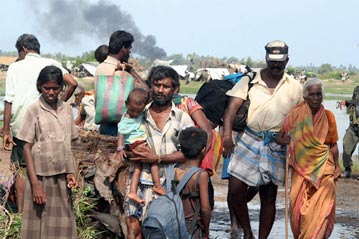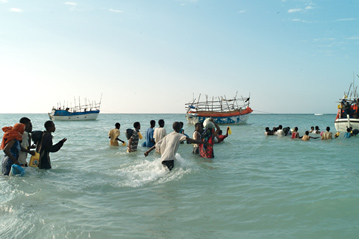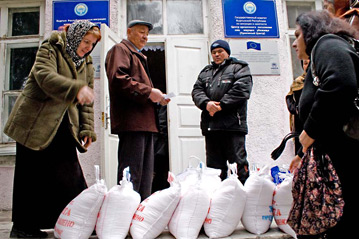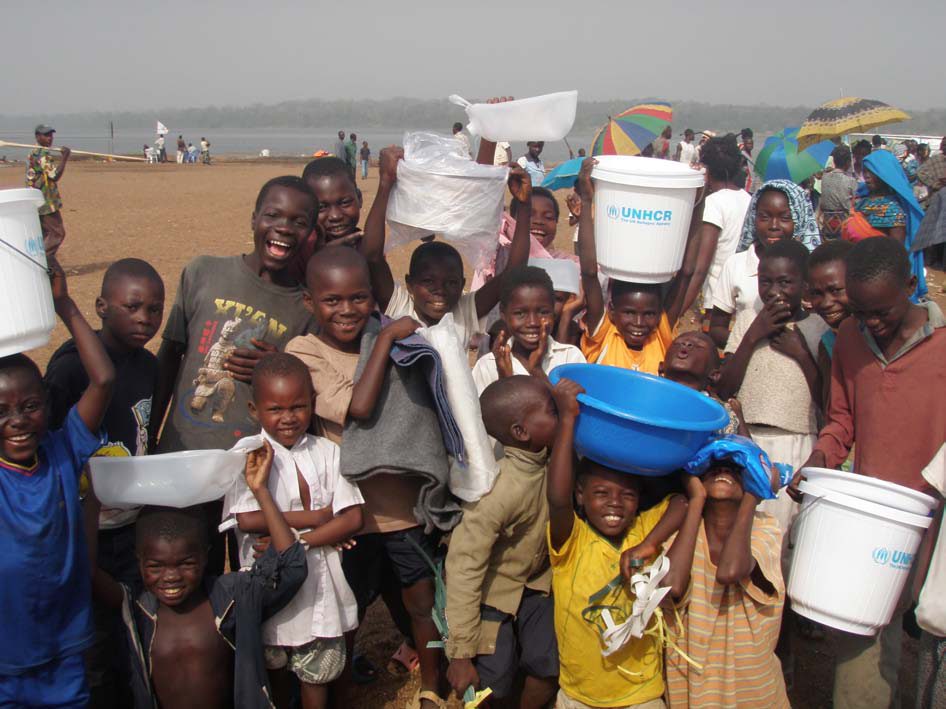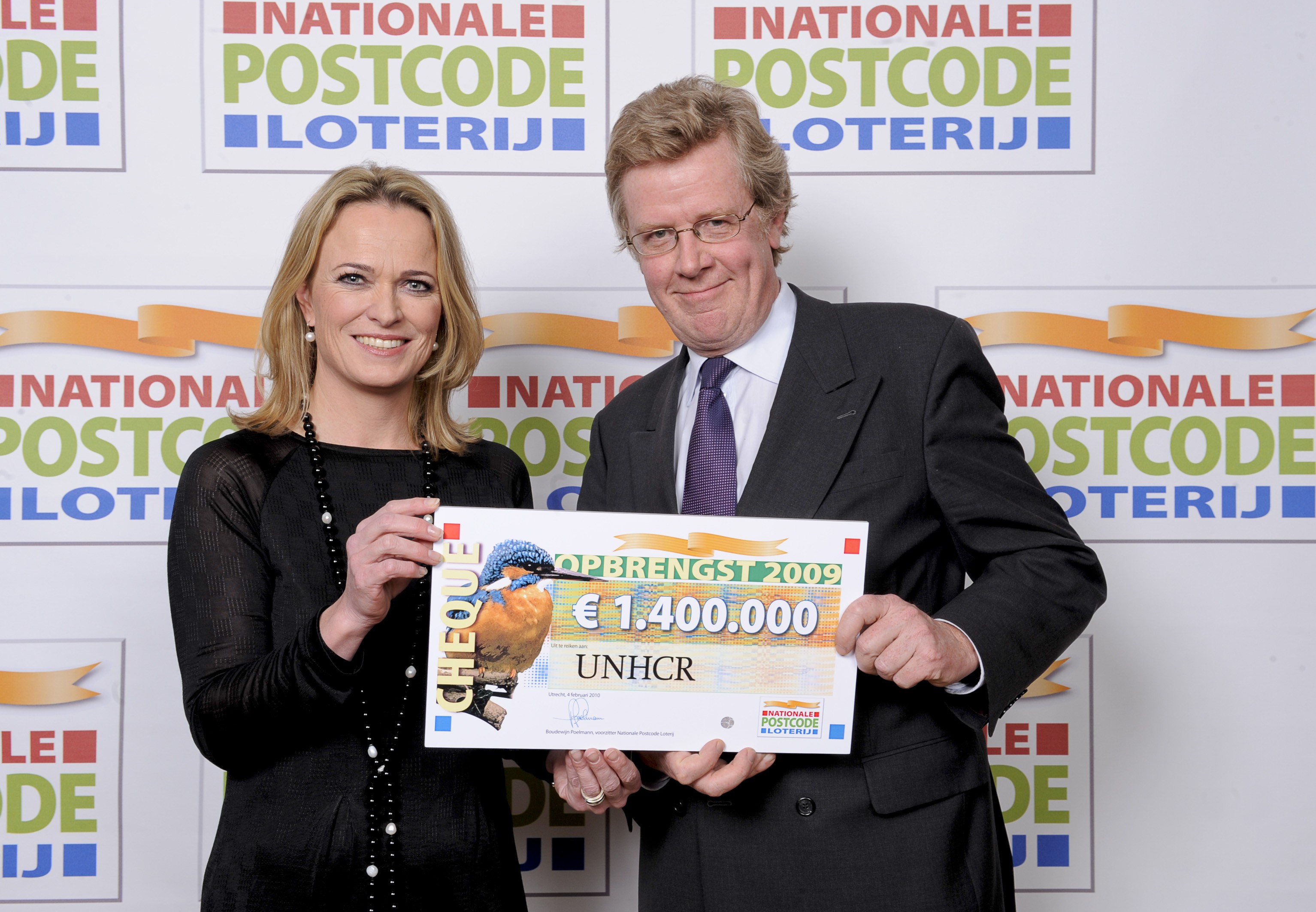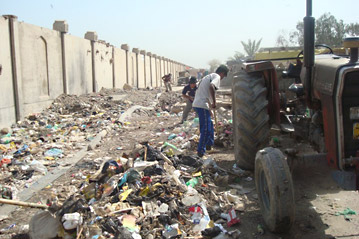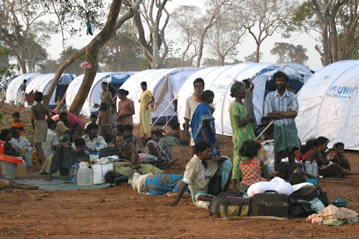Remembering Srebrenica
Remembering Srebrenica

SREBRENICA, Bosnia and Herzegovina, July 8 (UNHCR) - The view from Jasmin Muminovic's home across the Drina River is one of the most spectacularly beautiful panoramas in the Balkans. But the 33-year-old former soldier sees only nightmares.
Jasmin was severely wounded while serving as a soldier in the national army in the very early days of a series of wars which ripped apart the old Yugoslav Republic in the 1990s and created a series of new countries.
Invalided from the front in the newly declared independent state of Croatia to his native village, he discovered that his own homeland in neighbouring Bosnia and Herzegovina had also plunged into war. Within days, he and nearly 50 fellow Muslims, or Bosniaks, were rounded up by their old neighbours and new enemies, ethnic Bosnian Serb troops.
The majority of the Bosniak male prisoners were summarily executed. Jasmin was spared by a fluke of war at the last moment when his captors spotted his old Yugoslav army pack and freed him in a moment of mercy.
Further tragedy befell the Muminovic family, however, when Jasmin's brother was killed as the fighting continued. Jasmin eventually ended up defending an obscure village tucked snugly into the hills of eastern Bosnia which would soon become a worldwide symbol of the depravity of the conflict, the emergence of a chilling tactic of war which became known as 'ethnic cleansing,' and the failure of the international community to protect an innocent civilian population despite solemn promises to do just that.
Ultimately, the impending catastrophe also hastened the intervention of U.S. and NATO forces, an end to the fighting and the start of attempts to patch the region together again.
Genocide
Srebrenica entered the world's conscience during its darkest moment. On July 11, 1995, Serb units which had besieged the region for months - an area the U.N. had declared a protected zone - overran the town. Jasmin and thousands of other men escaped through the surrounding forests and hills. After seven days of running a gauntlet of ambushes, feints, hand-to-hand fighting, eating only unripe fruits and leaves along the escape trail, Jasmin reached safety and, as he described it recently, "I escaped from hell to heaven in a few short seconds." Many of his colleagues were cut down in the fighting or were captured and executed.
In Srebrenica, women and children and the men who stayed behind fled in panic as the Serbs advanced, down the only road out of town to the headquarters of a battalion of Dutch soldiers who were there obstensibly to protect them. As the outnumbered U.N. blue berets watched haplessly, men and young boys were ruthlessly separated from the females, marched away and subsequently massacred over a five-day period.
Nearly 8,000 civilians were slaughtered in the worst atrocity in Europe since World War II. The International War Crimes Tribunal in The Hague last year judged the action as genocide.
On Monday, July 11, the town and a chastened international community commemorate the 10th anniversary of the massacre. Some 1,326 victims exhumed from more than 60 mass graves and whose remains were identified by DNA testing have already been buried at a memorial site a few miles down the valley from Srebrenica at a place called Potocari, directly opposite the brooding and abandoned headquarters of the Dutch troops in a former battery factory.
A further 610 victims are being buried during the remembrance service on Monday, expected to attract as many as 30,000 people, including surviving wives, daughters and children of the dead men, regional and international diplomats and statesmen.
Jasmin will not attend, left instead to brood with his own nightmares at his home, gazing across the Drina into neighbouring Serbia.
"I dream of dead bodies," he said. "I dream of dead friends, of endless war, of blood, of being hunted down."
A tragic symbol
Srebrenica is not only a symbol of the Balkans recent blood past, but also a gauge of how much progress, or lack of progress in the eyes of some analysts, has been made since the guns fell silent and the Dayton Peace Accord was initialled 10 years ago this coming November.
Physically, the town, a narrow strip of buildings running along a valley floor and surrounded by blood-soaked hills, still has the appearance of a battered ghost town. More than 6,000 buildings were destroyed in the municipality, and many remain gutted.
Security has improved, but remains fragile. Only days before the official commemoration, a large amount of explosives and detonators were discovered near to the burial site.
Before the war, 37,000 people lived in Srebrenica, 73 percent of them Bosniaks and 23 percent ethnic Serbs. Today, 6,000 Serbs and 4,000 Muslims live there, reflecting both the precipitous drop in the overall population and a major change in its ethnic makeup.
Survivors have been painfully slow to return.
"In 2001 we couldn't help any civilians because there were virtually no returnees to Srebrenica to help," according to Udo Janz, the representative of the U.N. refugee agency in Bosnia. "We could count them on one hand."
Since then, the pace of return, both to Srebrenica and across Bosnia and Herzegovina, has picked up. Despite setbacks and an uncertain future, Janz insists that "what has happened in Bosnia and Srebrenica is, in many ways, a modest miracle."
Following a war in which at least 200,000 persons were killed, 2.2 million made homeless and an entire population deeply traumatized, "more than 1 million people in Bosnia have gone home in the last 10 years, even to a place where genocide took place," he said.
Paddy Ashdown, the High Representative of the international community, also used the word 'miracle' to describe an admittedly delicate situation: "The miracle in Bosnia is how much has been done in 10 years," he said. "A sixteenth of the population was killed, more than in France after World War II, half the population made homeless, 90 percent of the buildings destroyed. We have lost touch with how long it takes; healing is always measured in decades."
Jasmin Muminovic agrees that reconciliation will take a very, very long time.
"Not in my lifetime," he said. "Maybe in the lifetime of my grandchildren who will be able to forget what happened."
A major role
UNHCR has been involved in the Balkan crisis from its very earliest days. Along with other humanitarian agencies, it was helping as many as 3.5 million people throughout the entire region at the height of the crisis.
To feed its citizens, UNHCR launched a 3½-year airlift into the besieged Bosnian capital of Sarajevo which eventually became the longest-running humanitarian air bridge in history.
After the Dayton Peace Accord was initialled on November 21, 1995, the refugee agency began to assist the huge population of civilians who had been uprooted in their own countries or who had fled as refugees to neighbouring states to go home.
In September last year, the agency officially announced that more than 1 million uprooted persons had returned to Bosnia, including nearly half a million to regions where they were in a minority and thus both more vulnerable and in need of more assistance and protection.
Several hundred thousand other displaced persons permanently settled overseas and dropped off the monitoring screens of agencies such as UNHCR.
Across Bosnia, around half of the estimated 500,000 homes damaged or destroyed during the fighting have been repaired, according to Janz, as an estimated $5 billion in international aid flooded into the country.
The U.N. refugee agency itself spent an estimated $500 million since Dayton came into effect on housing reconstruction, de-mining programmes, essential infrastructure repair, establishing a legal aid network, the provision of basic humanitarian assistance, and other quick support projects.
The number of troops from the United States, Europe and other countries sent to enforce security dropped from a high of 69,000 to a current level of around 7,000 as the overall situation improved.
But the situation remains fragile. Nearly 300,000 civilians are still waiting to go home, though Bosnia and neighbouring Croatia and Serbia and Montenegro earlier this year agreed to try to get everyone back to their towns and villages by the end of 2006.
UNHCR has been reducing its own presence and programmes for the last several years and will continue to do so.
The massive inflow of international aid is steadily declining and the economy is barely limping along. The national unemployment rate is around 40 percent and up to 50 percent of the population live at or below the poverty line.
"A couple of years ago the overriding issue was security, security, security," Udo Janz said. "Today it is the economy, stupid."
The new buzz word in Bosnia is 'sustainability' - whether the gains achieved in the last few years can be maintained in such an unfavourable economic climate or whether the country could begin to backslide.
If overall security has improved immeasurably, some 10,000 suspected war criminals remain at large and true closure may never be achieved until at least many of them are called to answer for their crimes.
At the Srebrenica memorial, a marble obelisk spells out both a hope and a warning to future generations:

May grievance become hope
May revenge become justice
May mothers' tears become prayers
That Srebrenica
Never happens again
To no one and nowhere
At the foot of the plinth, a large bunch of red roses lie wilted in the warm summer sunshine.
By Ray Wilkinson in Srebrenica, Bosnia and Herzegovina


